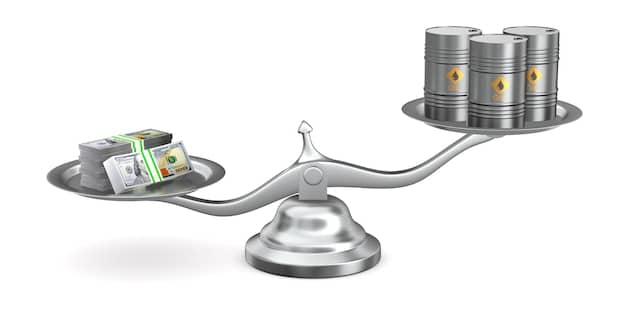Maximize Your Returns: Tax-Loss Harvesting Strategies for 2025

Tax-loss harvesting is a strategic approach to investment management that involves selling losing investments to offset capital gains, potentially reducing your tax liability and enhancing your portfolio’s overall return; learn how to implement this strategy effectively for the 2025 tax year.
Looking for ways to minimize your tax burden while optimizing your investment portfolio? Tax-loss harvesting: A strategic investing move to reduce your 2025 tax bill, might be just the strategy you need.
Understanding Tax-Loss Harvesting
Tax-loss harvesting is a powerful technique that allows investors to strategically manage their investment portfolios to reduce their tax liabilities. By understanding the core principles and practical applications of this strategy, investors can make informed decisions that potentially boost their after-tax returns. Let’s delve deeper into what tax-loss harvesting entails and why it is considered a valuable tool in investment management.
The Basic Principle of Tax-Loss Harvesting
At its core, tax-loss harvesting involves selling investments that have decreased in value to realize a capital loss. This loss can then be used to offset capital gains, which are profits made from selling investments at a higher price than their purchase price. The primary goal is to minimize the amount of taxes owed on investment gains.
This strategy is particularly useful in taxable investment accounts, such as brokerage accounts, where capital gains and losses are subject to taxation. Tax-advantaged accounts, like 401(k)s and IRAs, do not benefit from tax-loss harvesting because they are already sheltered from annual taxation. Therefore, focusing tax-loss harvesting efforts on taxable accounts can yield the most significant benefits.
Benefits of Tax-Loss Harvesting
The advantages of implementing tax-loss harvesting are multifaceted. Not only does it help reduce your current tax bill, but it can also improve your long-term investment performance. By strategically offsetting gains with losses, you can effectively defer taxes into the future, allowing more of your money to grow over time.
- Reducing Current Tax Liability: By offsetting capital gains with losses, you lower the amount of income subject to taxation.
- Deferring Taxes: Deferring taxes allows more of your investment to grow tax-free until a later date.
- Improving After-Tax Returns: Reducing the tax drag on your investments can lead to higher overall returns over the long term.
- Rebalancing Opportunities: Tax-loss harvesting provides opportunities to rebalance your portfolio, ensuring it aligns with your investment goals and risk tolerance.
In conclusion, understanding tax-loss harvesting and its benefits is crucial for any investor looking to optimize their investment strategy and minimize their tax obligations. By strategically utilizing this technique, you can potentially improve your after-tax returns and position your portfolio for long-term success.
How Tax-Loss Harvesting Works: A Step-by-Step Guide
Implementing tax-loss harvesting involves a series of steps, from identifying potential losses to carefully reinvesting the proceeds. Understanding each stage of the process is crucial for maximizing the benefits of this tax-saving strategy. Here’s a detailed guide on how tax-loss harvesting works, ensuring you can effectively manage your portfolio for optimal tax efficiency.

Step 1: Identify Potential Losses
The first step in tax-loss harvesting is to identify investments in your portfolio that have decreased in value. This involves reviewing your holdings and pinpointing assets that are currently trading below their original purchase price. Common examples include stocks, bonds, mutual funds, and ETFs that have experienced a decline.
Keep in mind that only losses realized in taxable accounts are eligible for tax-loss harvesting. Investments held in tax-advantaged accounts, such as 401(k)s or IRAs, are not subject to the same tax rules and therefore do not qualify for this strategy.
Step 2: Sell the Losing Investments
Once you have identified the losing investments, the next step is to sell them. This process realizes the capital loss, which can then be used to offset capital gains. It’s important to document these transactions accurately, including the date of sale, the number of shares sold, and the sale price, as this information will be needed when filing your taxes.
Selling the losing investments is a straightforward process, but it requires careful monitoring of your portfolio to ensure you are taking advantage of market downturns.
Step 3: Avoid the Wash-Sale Rule
The wash-sale rule is a critical consideration in tax-loss harvesting. This rule prevents investors from repurchasing the same or a substantially similar investment within 30 days before or after the sale. If you violate the wash-sale rule, the realized loss will be disallowed, and you will not be able to claim it on your taxes.
To avoid triggering the wash-sale rule, consider reinvesting the proceeds from the sale into a similar but not identical asset. For example, if you sell shares of an S&P 500 ETF, you could reinvest in a different S&P 500 ETF from a different provider or in a broad-market index fund.
Step 4: Reinvest the Proceeds
After selling the losing investments and ensuring compliance with the wash-sale rule, the final step is to reinvest the proceeds. This ensures that your portfolio remains aligned with your investment goals and risk tolerance. As mentioned above, you can reinvest in similar assets that do not trigger the wash-sale rule or explore other investment opportunities that fit your overall strategy.
Reinvesting the proceeds promptly helps you stay invested in the market and potentially benefit from any subsequent market recovery. It’s essential to have a clear plan for reinvestment to avoid any disruption to your long-term investment strategy.
In summary, tax-loss harvesting involves carefully identifying losses, selling the losing investments, avoiding the wash-sale rule, and reinvesting the proceeds. By following these steps, investors can effectively reduce their tax liabilities and enhance their portfolio’s after-tax performance. It’s a strategic approach that requires diligence and a good understanding of tax regulations.
Tax-Loss Harvesting Strategies
Implementing tax-loss harvesting effectively requires a well-thought-out strategy that considers various factors such as investment goals, risk tolerance, and tax implications. Different approaches can be tailored to suit individual investor needs and portfolio characteristics. Let’s explore some effective tax-loss harvesting strategies that can help you maximize your tax benefits.
Using ETFs and Mutual Funds for Tax-Loss Harvesting
Exchange-Traded Funds (ETFs) and mutual funds are popular investment vehicles for tax-loss harvesting due to their diversified nature and ease of trading. They allow investors to gain exposure to a broad range of assets, making it easier to find suitable replacements when selling losing investments to avoid the wash-sale rule.
For example, if you sell a mutual fund that tracks the S&P 500, you can reinvest in a similar ETF that tracks the same index but is offered by a different provider. This strategy allows you to maintain your exposure to the S&P 500 while still realizing the tax benefits of tax-loss harvesting.
Pairing Similar Assets
Another effective strategy is to pair similar assets within your portfolio. This involves identifying investments that are closely correlated and can serve as suitable replacements for each other. For instance, if you own stock in one large-cap company, you could consider selling it and reinvesting in another large-cap company in the same industry.
By pairing similar assets, you can maintain a consistent investment strategy while still taking advantage of tax-loss harvesting opportunities. This approach requires careful analysis to ensure that the replacement asset aligns with your investment objectives and risk tolerance.
Using Tax-Loss Harvesting to Rebalance Your Portfolio
Tax-loss harvesting can also be integrated with your portfolio rebalancing strategy. Rebalancing involves adjusting the asset allocation in your portfolio to maintain your desired risk profile. By strategically selling losing investments during a rebalancing exercise, you can simultaneously reduce your tax liability and realign your portfolio to your target asset allocation.
For example, if your portfolio is overweighted in a particular asset class that has underperformed, you can sell the losing investments in that asset class and reinvest the proceeds in other asset classes that are below their target allocation. This approach not only helps you minimize your tax burden but also ensures that your portfolio remains aligned with your long-term investment goals.
- Consistent Monitoring: Regularly review your portfolio to identify tax-loss harvesting opportunities.
- Diversification: Maintain a diversified portfolio to facilitate tax-loss harvesting while managing risk.
- Coordination with Rebalancing: Integrate tax-loss harvesting with your portfolio rebalancing strategy for optimal results.
In conclusion, employing effective tax-loss harvesting strategies can significantly enhance your investment portfolio’s after-tax performance. Whether using ETFs and mutual funds, pairing similar assets, or integrating with portfolio rebalancing, these techniques can help you maximize your tax benefits while staying aligned with your investment goals.
Potential Pitfalls and How to Avoid Them
While tax-loss harvesting is a valuable strategy, it is essential to be aware of potential pitfalls and take steps to avoid them. Overlooking these challenges can negate the benefits of tax-loss harvesting and potentially lead to unintended consequences. Here are some common pitfalls and practical tips on how to navigate them successfully.
The Wash-Sale Rule
As previously mentioned, the wash-sale rule is a critical consideration in tax-loss harvesting. Violating this rule can result in the disallowance of your realized losses, which defeats the purpose of the strategy. To avoid triggering the wash-sale rule, ensure that you do not repurchase the same or a substantially similar investment within 30 days before or after the sale.
One way to avoid the wash-sale rule is to invest in a different but similar asset. For example, if you sell shares of a particular stock, you can reinvest in another stock in the same industry or sector. Alternatively, you can wait more than 30 days before repurchasing the original investment.
Transaction Costs
Frequent trading can lead to higher transaction costs, such as brokerage fees and commissions. These costs can erode the tax benefits of tax-loss harvesting, especially in smaller portfolios. To minimize transaction costs, consider using a brokerage that offers commission-free trading or consolidating your trading activity to reduce the number of transactions.
It’s crucial to weigh the potential tax benefits of tax-loss harvesting against the associated transaction costs. In some cases, the tax savings may not outweigh the costs, making it less advantageous to pursue this strategy.

Tracking and Record-Keeping
Accurate tracking and record-keeping are essential for tax-loss harvesting. You need to maintain detailed records of all transactions, including the date of sale, the number of shares sold, the sale price, and the purchase price. This information is necessary when filing your taxes and claiming your capital losses.
Using a spreadsheet or a tax-tracking software can help you organize and manage your investment records effectively. It’s also a good idea to consult with a tax professional to ensure that you are complying with all applicable tax laws and regulations.
- Stay Informed: Keep up-to-date with tax laws and regulations to ensure compliance.
- Consult a Professional: Seek advice from a tax advisor or financial planner to optimize your tax-loss harvesting strategy.
- Consider Long-Term Implications: Evaluate the potential long-term impact of your tax-loss harvesting decisions.
In conclusion, being aware of potential pitfalls and taking proactive steps to avoid them is crucial for successful tax-loss harvesting. By understanding the wash-sale rule, managing transaction costs, and maintaining accurate records, you can maximize the tax benefits of this strategy while minimizing the risks.
Tax Implications and Reporting
Understanding the tax implications of tax-loss harvesting is essential for accurate reporting and compliance with tax laws. The process involves calculating capital gains and losses, understanding deduction limits, and properly reporting these transactions on your tax return. Let’s explore the tax implications and reporting requirements associated with tax-loss harvesting.
Calculating Capital Gains and Losses
The first step in understanding the tax implications of tax-loss harvesting is to calculate your capital gains and losses. Capital gains occur when you sell an investment for more than its original purchase price, while capital losses occur when you sell an investment for less than its original purchase price. The difference between the sale price and the purchase price determines the amount of the gain or loss.
Capital gains and losses are classified as either short-term or long-term, depending on how long you held the investment. Short-term gains and losses apply to investments held for one year or less, while long-term gains and losses apply to investments held for more than one year. The tax rates for short-term and long-term capital gains differ, with long-term gains typically taxed at lower rates.
Deduction Limits
When you have both capital gains and losses, you can use the losses to offset the gains. If your capital losses exceed your capital gains, you can deduct up to $3,000 of the excess loss from your ordinary income. Any remaining losses can be carried forward to future tax years.
For example, if you have $5,000 in capital gains and $8,000 in capital losses, you can use the $5,000 in losses to offset the $5,000 in gains. You can then deduct $3,000 of the remaining $3,000 in losses from your ordinary income. The remaining balance can be carried forward to the next tax year.
Reporting Tax-Loss Harvesting on Your Tax Return
To report tax-loss harvesting on your tax return, you need to use Schedule D (Form 1040), Capital Gains and Losses. This form requires you to provide details of your capital gains and losses, including the date of sale, the number of shares sold, the sale price, and the purchase price.
You also need to indicate whether the gains and losses are short-term or long-term. The information from Schedule D is then transferred to Form 1040, U.S. Individual Income Tax Return, where your capital gains and losses are used to calculate your taxable income.
In conclusion, understanding the tax implications and reporting requirements of tax-loss harvesting is crucial for compliance with tax laws. By accurately calculating capital gains and losses, understanding deduction limits, and properly reporting these transactions on your tax return, you can effectively manage your tax liabilities and maximize the benefits of tax-loss harvesting.
| Key Point | Brief Description |
|---|---|
| 💡 Core Concept | Sell losing investments to offset capital gains, reducing tax liability. |
| 🚫 Wash-Sale Rule | Avoid repurchasing similar assets within 30 days to maintain tax benefits. |
| 📈 Reinvestment | Reinvest proceeds into different, but similar, assets to stay invested. |
| 🧾 Tax Form | Use Schedule D to report capital gains and losses on your tax return. |
FAQ
▼
The main goal is to reduce your overall tax liability by offsetting capital gains with capital losses, thus minimizing the amount of taxes you owe on your investment profits.
▼
The wash-sale rule disallows a tax loss if you buy a substantially identical security within 30 days before or after selling it, preventing you from claiming the loss.
▼
No, tax-loss harvesting is most effective in taxable investment accounts, such as brokerage accounts. It is not applicable in tax-advantaged accounts like 401(k)s or IRAs.
▼
If your capital losses exceed your capital gains, you can deduct up to $3,000 of the excess loss from your ordinary income, with any remaining losses carried forward.
▼
It’s beneficial to regularly monitor your portfolio for tax-loss harvesting opportunities, especially during market downturns, to maximize potential tax savings.
Conclusion
In conclusion, tax-loss harvesting: A strategic investing move to reduce your 2025 tax bill, is a valuable tool for investors seeking to minimize their tax liabilities and enhance their portfolio’s after-tax returns. By understanding the principles, strategies, and potential pitfalls of tax-loss harvesting, you can make informed decisions that align with your investment goals and financial situation.





